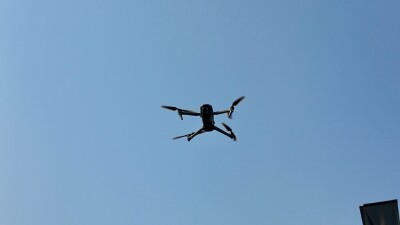The integration of manned and unmanned aircraft in controlled airspace is inevitable and no longer a matter of if but when. Advances on UTM (Unmanned Traffic Management) and the simplification and commercialization of detect-and-avoid systems are forcing the FAA to get closer and closer to a ruling that would allow UAV flights to operate beyond visual line of sight (BVLOS) and eventually, in the vicinity of and in coordination with, manned aircraft.
Over the past year I’ve been writing for Commercial UAV News, and in all these months I’ve met amazing individuals of all ages and professions that have decided to make this industry their home. The emphasis on my writing and my research has been primarily on safety and the complex relationship between this new generation of aviators with the federal regulator, but also with the established business of transporting goods and people on manned aircraft. A number of the men and women who I have interviewed over the course of the past 15 months, primarily over the issue of their involvement with the UAV industry, also happened to be aviators and pilots of manned aircraft.These conversations have led to the belief that there’s a growing community of manned aircraft pilots who are joining the UAV industry. They’re adopting the unofficial role of ‘mediators’ between the established way of conducting business in the manned aviation community and how these methods and procedures can be adapted to the unmanned aircraft sector. However, without establishing a common language and shared universal procedures, the integration of the two types of aircraft in controlled airspace will be pushed further in the future. By contrast, adoption of these established methodologies by the UAV industry might accelerate the integration.A perfect example is the recent increase in the interest for Safety Management Systems (SMS) in the drone community and how more and more established enterprises adding drone functions to their daily routines, are choosing to implement SMS before they become operational. The FAA will be granting more and more waivers to companies that responsibly can demonstrate that their operations are safe and are also following strict protocols to guarantee the safety of people and installations on the ground.Given that more and more pilots of manned aircraft are joining the UAV industry and taking into account that these pilots bring to the table years and sometimes decades of experience in safety, we have created a new LinkedIn group called “Aviators for Drone Safety”.The reason we called it Aviators is because we want to have mechanics, Air Traffic Controllers, regulators and anyone currently involved in the handling, management and operation of manned aircraft to join us in an effort to increase safety and contribute to the safe integration of manned and unmanned aircraft in controlled airspace. If you believe this initiative is important and you want to add your voice to the growing chorus of safety-oriented aviators, we invite you to join us today.Subscribe
The information you submit will be stored and used to communicate with you about your interest in Commercial UAV News. To understand more about how we use and store information, please refer to our privacy policy.
December 8, 2017
Are You a Manned Aircraft Pilot Who Cares About Drone Safety?















Comments